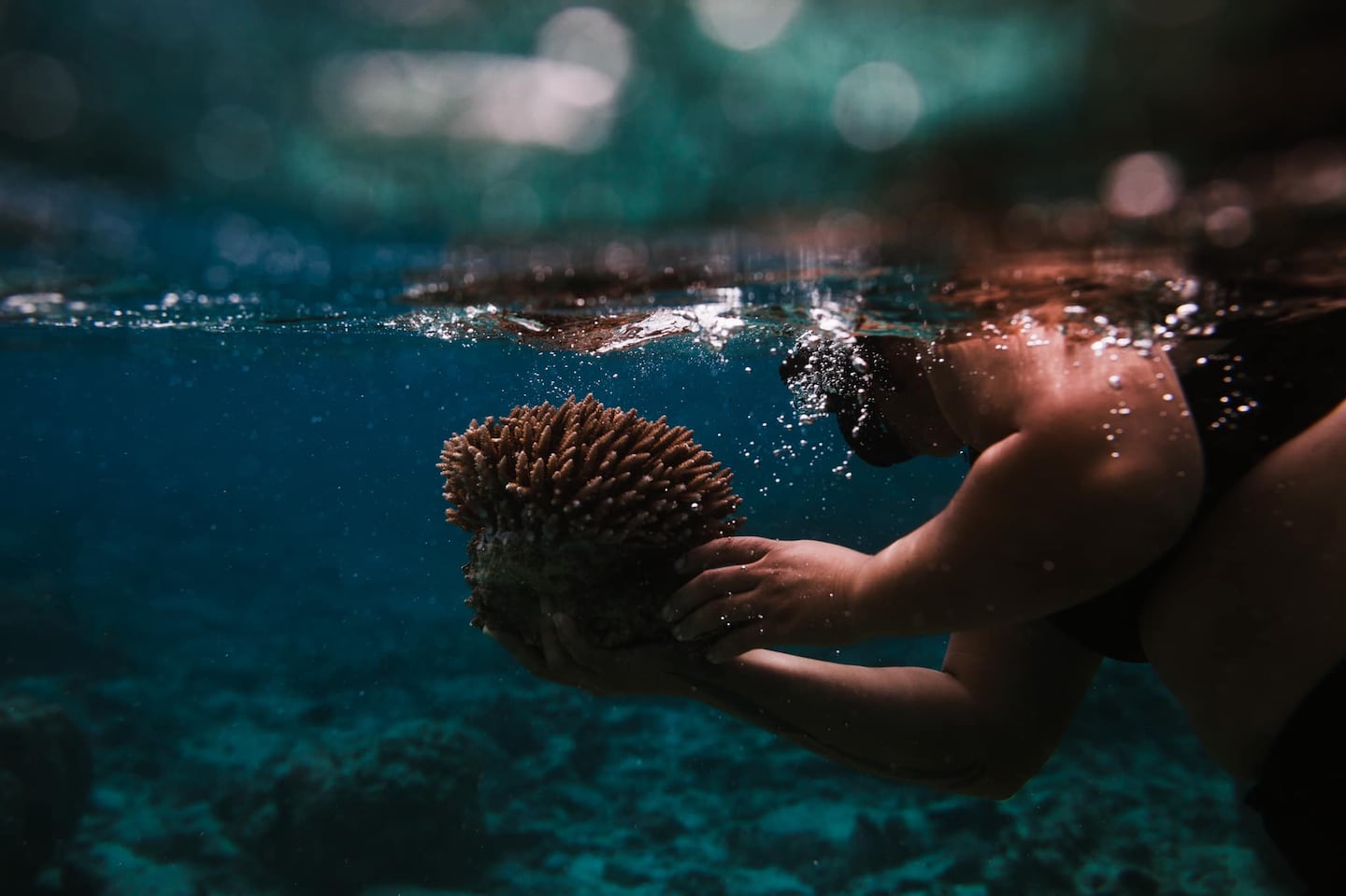Cook Islands coral reefs are under threat from climate change, overfishing, storm damage and pollution caused by tourism and a group determined to save them is asking tourists to help.
Coral reefs are considered the rainforests of the sea, providing marine species with food and shelter; coastal protection preventing erosion from heavy waves and storms; and food and income for people, especially those from indigenous communities.
In Rarotonga, the lagoon reefs closer to shore are especially in danger so non-governmental organisation Te Ara o te Akau are working at protecting them.
Te Ara o te Akau founder Alex King says, “It’s very, very obvious. There’s a lot of algae growth all over the coral substrates in the lagoon. It’s not as bright and colourful as it used to be. There’s not as many fish as they used to be within the lagoons.”
“We have the impact and demand of tourism as well here in the Cook Islands and which sees overdevelopments which weaken the shorelines, pollute our stream way and this in turn actually causes excess nutrients in our lagoon waters and help algae to overgrow on our coral and it actually suffocates them,” King says.
King is urging visitors to help protect the coral reefs by not standing on them when they go swimming or snorkelling.
“Either do your own research about touching corals, standing on coral, what coral actually is because they are animals, they are living things. So, when you stand on them, you’re basically destroying them.”
She also recommends people use natural skin and wash products such as body wash or sunscreen that don’t have chemicals that wash off into the ocean.
“We have a lot of people that obviously go swimming in the lagoons. It’s amazing, it’s beautiful and it’s there for all of us to use, but it’s just being a lot more environmentally conscious,” she says.
Te Ara o te Akau aims to implement coral restoration methods using nurseries within the lagoons to help regenerate coral life.
“Our main goal is to help regrow the coral reef following degradation over recent years, using our lagoon-protected nurseries, sheltering our marine life, and helping to increase our fish population.”
So far they have 200 coral inside their nursery.
“Over half of them have already attached themselves and started growing onto the frames, which is such a great sign. It’s really good. That’s a success so far,” King says.
Another risk for coral reefs are crown-of-thorn starfish, Taramea, which poison the coral. The latest outbreak was in 2020. Dr Teina Rongo leads Taramea operations, which have removed 8000 starfish since then, enough to cover the area of eight rugby fields.
He says such large numbers are caused by poor actions on land, such as leaky sewage or septic tanks and land development, that pour nutrients into the ocean, enabling the starfish to overpopulate.
“The nutrients help the plants grow and the plant becomes food for the baby Taramea and then goes from there. As the Taramea develops and they settle onto a reef, they switch their diet to eating corals,” Rongo says.
“So the more nutrients we put into the environment, the higher the probability of their young surviving. So it’s really, we are doing this, but we also need to fix what we are doing on land.”
Te Ara o te Akau also plans to work with the government to implement rules for tourist operators to protect the reefs.
“As an example, we would have the turtle tour operators have to abide by certain rules where they can have the passage [one] at a time s it’s not disruptive to the system that’s happening within the passage because obviously the turtles, the fish, all of that are interconnected… We’re really just trying to find a way that we can bring more protective barriers.”
Rongo, who leads Taramea Operations encourages groups like Ta Ara o Te Akau who are working on restoration projects, “because these are all young people that are trying to help.”
For him, his priority is getting rid of threats like Taramea before focusing on restoration.
“It gets complicated as well because you also have to fix what’s going on on land. So while we are doing this, we’re doing a lot of awareness in the community talking with our traditional leaders as well, he says.
“But Alex and her team are doing a good job in terms of what they’re trying to achieve and the restoration part, planting corals, that’s the next step really.”



